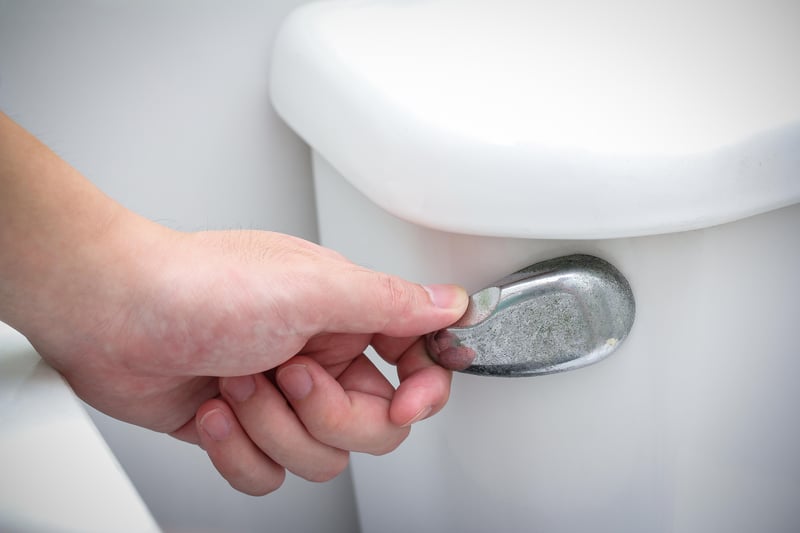Manténgase sano!

- Cara Murez
- Posted August 1, 2022
Hormonal Drug May Help Women Ease Urinary Incontinence
Menopause is famous for triggering hot flashes and mood swings, but one embarrassing side effect of a woman's drop in estrogen levels is lesser known -- urinary urge incontinence.
Now, a new study suggests that a topical treatment called prasterone, applied via a vaginal suppository, can ease those symptoms.
"It's a small, observational study, but I think it really speaks to the fact that it's very promising that we have some alternatives to treat GSM, or genitourinary syndrome of menopause,"said Dr. Chrisandra Shufelt, president of the North American Menopause Society and chair of the division of general internal medicine at the Mayo Clinic in Jacksonville, Fla.
"As of right now, it's a condition that's so underrecognized, underdiscussed and undertreated, and that has a lot to do with the fact that women aren't bringing it up, but providers are also not asking about it,"said Shufelt, who was not involved with the study.
GSM symptoms include changes to the labia, clitoris, vagina, urethra and bladder. Some of those symptoms are related to vulvar and vaginal drying and thinning of skin. Others, including urge incontinence and urinary tract infections, are related to the urinary system.
Those symptoms can be treated with numerous moisturizers and lubricating agents, as well as both local and systemic hormones, depending on severity. Treatments include hyaluronic acid.
For this study, Italian researchers led by Dr. Claudia Collà Ruvolo, from the department of neurosciences, reproductive sciences and odontostomatology at the University of Naples, compared hyaluronic acid with prasterone in women for 12 weeks. The study included 58 women enrolled between December 2019 and May 2021. The research team concluded that prasterone improved the severity of urge incontinence in women with GSM.
About 25% of young women, 44% to 57% of middle-aged and postmenopausal women, and 75% of older women experience some type of urinary incontinence. That can include stress incontinence, which is leaking urine during a sneeze or similar occurrence; urge incontinence, a feeling of suddenly having to go; or combined types, according to the American College of Obstetricians and Gynecologists (ACOG).
Even though it is incredibly common, many women don't talk to their doctors about incontinence. A survey of U.S. women found that 45% of those who experience incontinence at least weekly don't tell their doctors, ACOG reported, suggesting that physicians should bring it up and screen for this issue.
Most of the treatments for those in menopause are focused on other menopause symptoms, and simply having this topical option available for incontinence would make providers more aware of the need to discuss and treat the condition, Shufelt said.
Side effects that may occur with oral hormone therapy are not the same as they are for a topical treatment like prasterone, Shufelt noted.
"If we do have any absorption, it's minimal, if any at all,"Shufelt explained. "Those warnings and those kind of fear factors that go along with it is another lesson to be learned that women need to understand, that those don't really apply to these types of topical treatments. We don't have the large, randomized clinical trials to support that, but we have a tremendous amount of observational data to suggest that giving women estrogen topically, it's not associated with those scary outcomes that are listed like breast cancer or stroke."
Prasterone is already approved by the U.S. Food and Drug Administration for dyspareunia, which is painful intercourse that is a symptom of vulvar and vagina atrophy due to menopause.
The study, which was not funded by the drug's maker, was published online July 27 in the journal Menopause.
Used as a vaginal suppository, prasterone is converted into estradiol and testosterone, said Dr. JoAnn Pinkerton, a professor of obstetrics and gynecology in the University of Virginia Health System in Charlottesville, Va.
"The results are promising that there may be a local vaginal therapy that will help the common problem of postmenopausal women of urinary urgency and incontinence,"Pinkerton said.
Pinkerton, who was not involved with the research, noted that the study included only Italian women and the treatment needed to be confirmed in a larger clinical trial.
"These findings need to be tested in randomized, blinded studies using larger populations of women, including women of different ethnicities, to confirm these early results,"Pinkerton said. "However, the results are promising to have a local vaginal therapy which helps urinary incontinence."
More information
The U.S. National Library of Medicine has more on urge incontinence.
SOURCES: Chrisandra Shufelt, MD, president, North American Menopause Society, chair, division of general internal medicine, Mayo Clinic and director, Mayo Clinic Center for Women's Health, Jacksonville, Fla.; JoAnn Pinkerton MD, professor, obstetrics and gynecology, University of Virginia Health System, Charlottesville, Va.; Menopause, July 27, 2022, online





